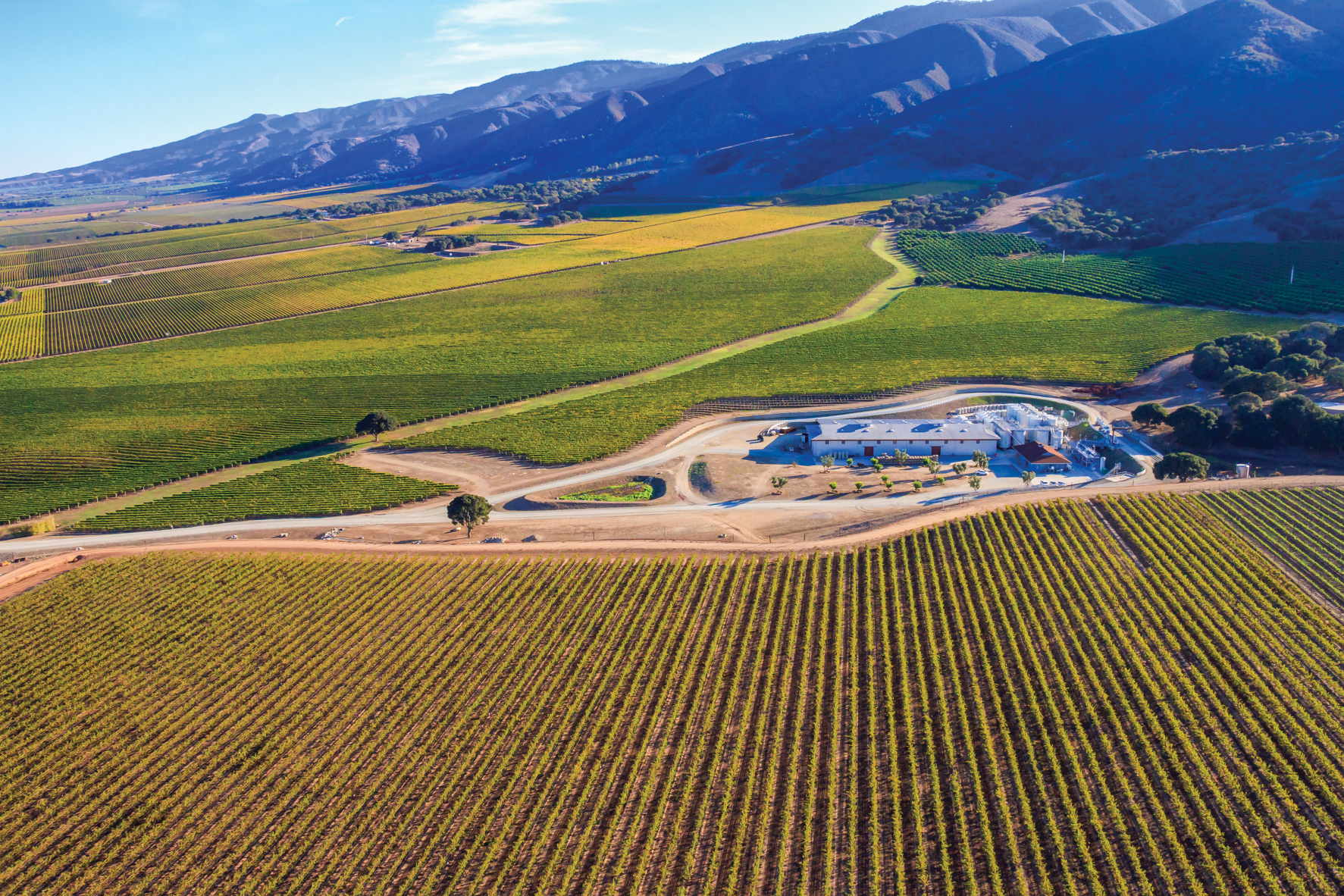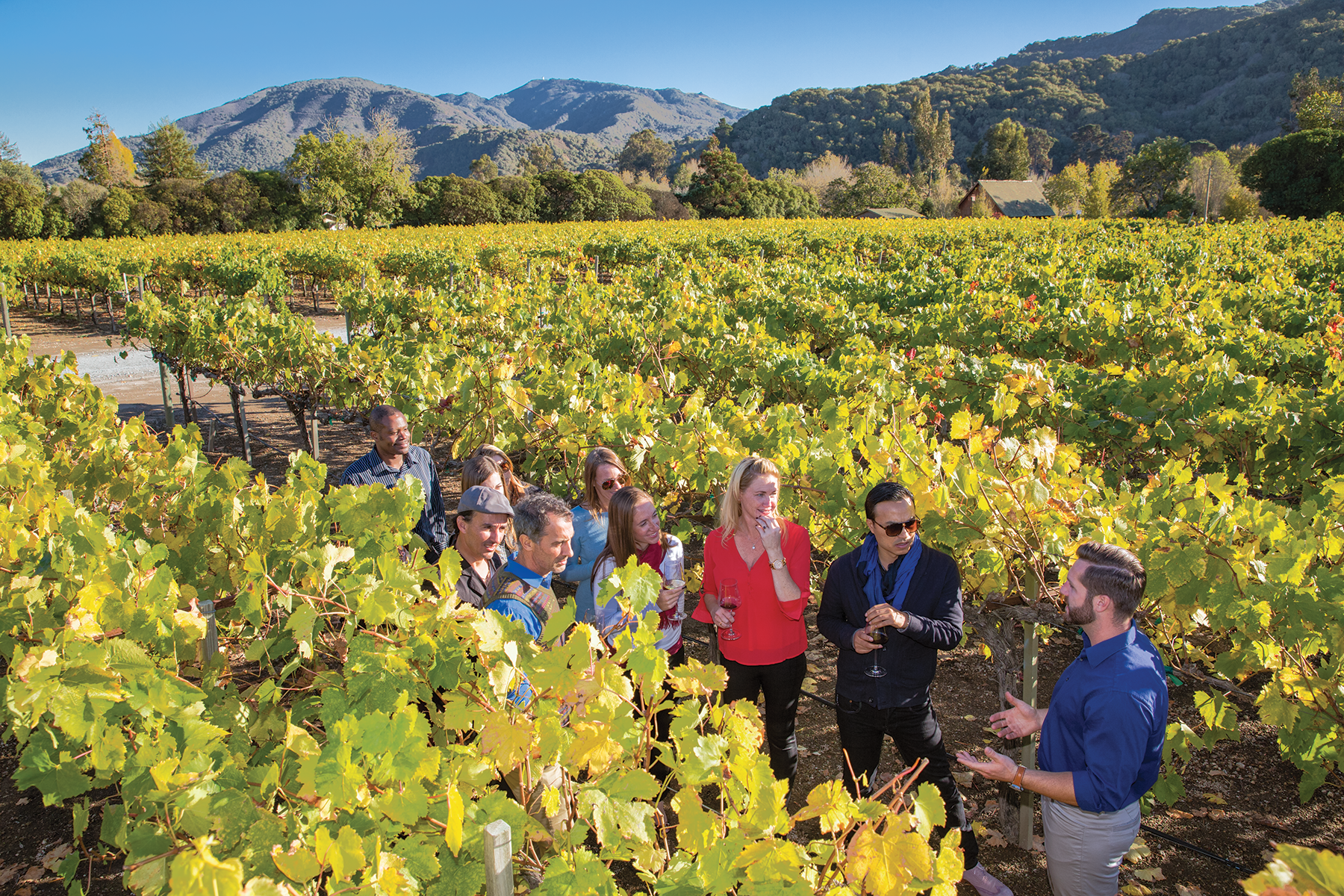Monterey County winds a blow to area wine tourism

Winegrape acreage fans out in Monterey County’s Santa Lucia Highlands, including the vineyards of Mer Soleil, foreground. The region has become renowned for growing pinot noir and chardonnay.
Photo/Steve Mack/Monterey County Vintners and Growers Association


Photo/See Monterey
By Caitlin Fillmore
In marketing its wine region, including vineyards from the Pacific shores to the Santa Lucia Highlands and Salinas Valley, the Monterey County Vintners and Growers Association highlights evocative phrases to depict the coastal geography and climate.
One of the deepest underwater ravines on the West Coast lies off Monterey Bay. Vintners say these cool depths, called the Blue Grand Canyon, deliver a dependable, cool fog most every morning. They say strong, consistent winds push the fog through the valley’s natural funnel, gradually warming to produce the region’s “thermal rainbow” of microclimates.
The valley’s heat in turn encourages proper maturation of the fruit, and then the daily winds close the plant’s stomata, a winegrape leaf structure similar to pores on the skin. When the stomata are closed, photosynthesis stops and winegrapes can slowly develop on the vine.
“Our plants get enough heat to ripen, but we have this prolonged season,” said Kim Stemler, executive director for the vintners and growers association. “That is really good for the phenolic development of the fruit and the ripening. There is such a big, diurnal shift throughout the day. The fruit we have here really likes that pattern.”
Monterey County has more than 42,000 acres of planted vineyards, more than some of its far more famous coastal wine-producing neighbors. It cultivates more than 50 different varietals, from Albariño to Zinfandel.
But the county’s climate, particularly its winds, can create some challenging contradictions for a wine region trying to build its brand and attract more tourism. Some winegrape producers say they fear the same winds that push the fog and help cool vineyard leaves can also discourage winery construction and dissuade tourists who may not want to sip fine wine varietals in gusty settings.
“It’s not a breeze, it’s 15 to 20 knots. It’s a nuisance for people who might not otherwise be used to it,” said Steve McIntyre, owner of McIntyre Vineyards and Kimberly Vineyard. He is a 40-year wine industry veteran farming 12,000 acres in several viticulture areas of Monterey County, including the Santa Lucia Highlands, Arroyo Seco, San Bernabe and Hames Valley.
“It’s so windy every afternoon, it discourages developers and wineries that want to establish a hospitality element,” McIntyre said.
The vintners and growers association website features a photo on its “visit” page of a laughing woman with hair visibly sweeping around her face.
With winds blowing through the picturesque wine country, in “over three decades of our tasting room and hospitality, we never had a customer come to the tasting room and the Salinas Valley and marvel at the beauty,” quipped Jason Smith, president and CEO of Valley Farm Management. The firm oversees 800 acres of vineyards in the Santa Lucia Highlands.
“My standing joke is that a lot of the time you have to do that behind a sliding glass door,” Smith added.
Smith’s parents, Rich and Claudia Smith, were among the first modern vintners to explore the Santa Lucia Highlands, where Spanish missionaries planted grapes long ago. The Smiths started Paraiso Vineyards in 1990. A tasting room and winery in Soledad followed in 2005.
“My parents started the winery to showcase our great Monterey wines, and others followed,” Smith said.
The Santa Lucia Highlands is now winning acclaim for its pinot noir and chardonnay. In the rugged, remote Cachagua region, vineyards grow robust red wines such as Bordeaux and merlot. On the other side of the mountain, gravelly soils of the Arroyo Seco region produce a sauvignon blanc known for high minerality and acidity.
Stemler said Monterey County ranks as the largest grower of pinot noir and “premium, coastal, cool-weather chardonnay” in the state and the second largest grower of chardonnay.
The wine sector produces $1.4 billion in economic activity for the county and provides 10,491 jobs, according to a February report by the Wine Institute and California Association of Winegrape Growers. Yet those figures fall well short of goals the county set in its 2010 general plan.
“We all envisioned much more development than we currently have,” McIntyre said. “On one hand, we are disappointed in our progress. But in other ways, we are not.”
McIntyre said he is bullish on Monterey County vineyards and its wine quality. Yet he expresses envy about the tourists that flock to more than 200 wineries in the Paso Robles area of San Luis Obispo County. Santa Barbara County, with less vineyard acreage than Monterey, is also a significant wine tourism destination.
In Monterey County, home to at least 59 wineries, McIntyre said he would like to see a half dozen more added to the county’s signature River Road Wine Trail to attract more visitors.
McIntyre and Stemler of the vintners and growers association say they hope for development of the Paraiso Springs Resort, a proposed, long-delayed luxury lodging project that is intended to be a destination for wine tourists in the Salinas Valley.
For now, the vintners and growers association markets the Monterey wine sector as “farmer focused” and “authentic.”
For his part, McIntyre recently settled on “Cinderella” to describe the under-appreciated nature of the vineyards he has worked for decades.
“We’re happy to be under the radar. There’s a downside to being popular,” he said. “It’s like a studio musician. They’re the highest quality musicians in the world, and you don’t know who they are. But the stars do, and the stars want to play with them.”
(Caitlin Fillmore is a reporter in Monterey County. She may be contacted at cslhfillmore@gmail.com.)




